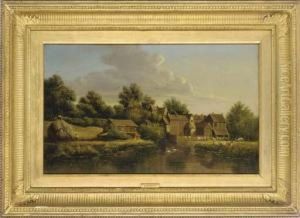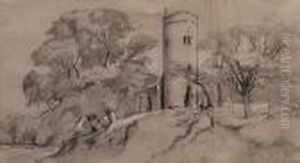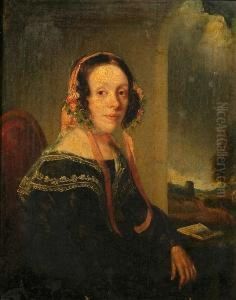Anthony Sandys Paintings
Anthony Frederick Augustus Sandys, born in 1829 in Norwich, England, was a distinguished painter and illustrator associated with the Pre-Raphaelite Brotherhood, although he was never an official member. His career was marked by a fascination with medieval and classical subjects, often portrayed with an intense realism and intricate detail that reflected the Pre-Raphaelite aesthetic. Sandys' early work was influenced by Dante Gabriel Rossetti, under whom he briefly studied, and this relationship significantly shaped his artistic direction.
Sandys' technique and style evolved over the years, characterized by his meticulous attention to detail and his use of rich, vibrant colors. He became renowned for his striking portraits, particularly of women, which often featured elaborate costumes and evocative expressions. These portraits were not just visually stunning; they also delved into the personalities and inner lives of his subjects, making them some of the most compelling works of the Victorian era.
Beyond portraiture, Sandys was also deeply interested in mythological and literary themes, drawing inspiration from ancient Greek mythology and British literary works. His illustrations for Thomas Malory's 'Le Morte d'Arthur' and other literary pieces are notable for their dramatic intensity and narrative depth, showcasing his ability to fuse classical themes with his unique artistic vision.
Throughout his career, Sandys faced both critical acclaim and controversy. His work was celebrated for its beauty and complexity, but at times it was also critiqued for its overt sensuality and departure from conventional norms. Despite this, he maintained a successful career, exhibiting at prestigious venues such as the Royal Academy and the Grosvenor Gallery.
Anthony Frederick Augustus Sandys passed away in 1904, leaving behind a legacy that has continued to influence artists and captivate audiences. His contributions to the Pre-Raphaelite movement and Victorian art have been re-evaluated and appreciated in recent years, highlighting his role as one of the era's most innovative and compelling figures.

